CHAPTER 3: THE PLANO STORY
OVERVIEW OF DEVELOPMENT ERAS AND THEMES
Plano’s Native Landscape (ca. 11,000 B.C. - 1840)
First inhabited by Native American tribes, the Plano area would eventually be claimed by Spain, France, Mexico, and the Republic of Texas. The Peters Colony was established to attract settlers to North Texas.
Plano’s Early Years (1840 - 1872)
The community of Plano emerges as the first pioneer settlers arrive to establish farms, businesses, and institutions. This era ends with the arrival of the H&TC Railroad.
Downtown Plano Emerges (1872 - 1895)
With the arrival of the railroads, Plano transitions to a center for business and agricultural commerce. The era ends with the last great fire that destroys most of Downtown.
Plano Persists (1895- 1920)
Rebuilding from the fire, Plano begins to modernize with improvements such as electricity, gas, water, sidewalks, public schools, paved roads, and the interurban railroad.
Small Town Plano (1920 - 1958)
Development was slow through the Great Depression, but growth would come following World War II and rapidly increase with the opening of Central Expressway (US 75).
Plano Welcomes Growth (1958 - 1985)
Rapid residential growth brings with it new shopping centers, offices, schools, and parks. Plano begins moving westward and takes a primarily suburban form as farms are replaced with rooftops.
Corporate Plano (1985 - 2000)
In addition to continued suburban growth, large corporate office campuses locate on the city’s west side and the opening of the Dallas North Tollway brings new growth and development.
Plano Today (2000 - 2018)
The days of rapid growth slow, but the DART rail brings renewed energy to Downtown and major activity centers, such as Legacy Town Center and the Shops at Willow Bend, become popular.
Architecture
Historic houses, buildings, and architectural styles that are significant to Plano.
Downtown Events and buildings that were specific to Downtown.
Growth & Development
Significant dates and events, including the population of Plano, as it developed.
Business
Key businesses and companies that have contributed to the growth and development of Plano.
Douglass Community
The contributions and development of Plano’s African-American community.
Institutions
Cemeteries, churches, schools and other institutional buildings that were vital to establishing Plano’s community.
Transportation and Infrastructure
Major railroads, roadways, utilities, and other infrastructure that influenced growth in Plano.
THEMES
Events in the timeline are divided into seven (7) themes which are described to the left. Each theme is identified using a color so that themes can be read in the context of a single development era or so that one theme can be followed through the whole timeline.
ICONS & GRAPHICS
Icons and graphics are used throughout the timeline to mark key events in the era. Icons include symbols for historic fires and other overall contextual happenings. Graphics and photos are also used to indicate critical points in Plano’s history.
RESOURCES
Content in this timeline was compiled using several resources, including the books Plano, Texas: The Early Years, Images of America: Historic Downtown Plano , historic Wells Collection images, timeline focus group input, and City of Plano staff.
november 2018 CHapter 3: history of plano 21
PRE-1840: PLANO’S NATIVE LANDSCAPE
Spanning from the beginning of the Pre-Columbian Era around 11,000 B.C. to when the first Anglo settlers began arriving in the area around 1840, Plano’s early history is part of the greater historical context of North America, Texas, and the North Texas region. Archaeological evidence suggests the first humans to occupy North America were nomadic hunters in search of mammoth and bison, eventually becoming foraging societies who moved around on a seasonal basis. Native American settlements were later established with long-distance trade networks developed to bring important tools and other items to the area. In the early 1500s, the first Europeans came to Texas, exploring the area and claiming it for Spain. French explorers briefly claimed portions of Texas in the late 1600s, encouraging Spain to increase its influence in the area through the establishment of Catholic missions. Mexico would gain independence from Spain in 1821, followed by Texas independence in 1836. Plano as we know it today begins while part of the Republic of Texas, with the arrival of the first known settler in 1840.
PALEo-INDIAN PERIOD
(11,000 B.C. - 7,000 B.C.)
Nomadic humans were likely the first to have occupied North Central Texas around 11,000 B.C., hunting large animals such as mammoth and bison. Although no sites have been found in Plano, a site of Paleo-Indian culture has been found to the west, in the Elm Fork of the Trinity River in Denton County.
11,000 B.C.
Pre-Columbian Era (11,000 B.C. - 1500 A.D.)
EVIDENCE OF EARLY HUMANS
Evidence of early human life has been discovered in various places across Collin County. In 1926, a human skeleton was found placed in an upright position and thought to be the remains of a Native American placed there before the area was occupied by pioneer settlers. In 1933, another skeleton was found with many arrowheads on the banks of the Sister Grove Creek near Westminster. Finally in 1950, the excavation of a site under what is now Lavon Lake uncovered a pit with chips of flint, burned limestone rocks, fragments of broken pottery, various sizes of arrows and spear points, scrapers, and flaking tools made of antler tines. There were also grinding instruments, hoe blades made of bison scapula, bones of fish and small game animals, fragments of edible roots, and a burial ground containing the remains of several people.
ARCHAIC PERIOD
(7,000 B.C. - 700 A.D.)
People of the Archaic Period were hunters, but also began foraging. Evidence was discovered at a site in the southwest part of the Dallas-Fort Worth Metroplex that suggests small groups of these foraging hunters occupied an area for a short time, probably moving seasonally. The most significant camps and settlements in Collin County have been found in the watershed of the East Fork of the Trinity River northwest of Lake Lavon.
Blackland prairie
Much of North Central Texas used to be covered by millions of acres of blackland prairie. The ecoregion was home to herds of grazing bison and tall prairie grasses. In modern Plano, what remains of the ecoregion is dedicated in nature preserves - the Arbor Hills Nature Preserve and the Oak Point Park and Nature Preserve.
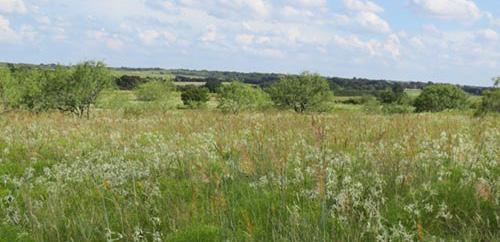
November 2018 CHapter 3: history of plano 22 Transportation and Infrastructure Growth & Development Institutions Downtown Douglass
Architecture Business 1500
Community
SPANISH EXPLORERS
(ca. 1517-1535)
After the Columbian discovery of North America in 1492, Spanish explorers such as Cabeza de Vaca became the first Europeans to venture through Texas. Although the area would be claimed by Spain for over three centuries, Texas was sparsely settled by the Spanish and largely ignored until the late 1600s.
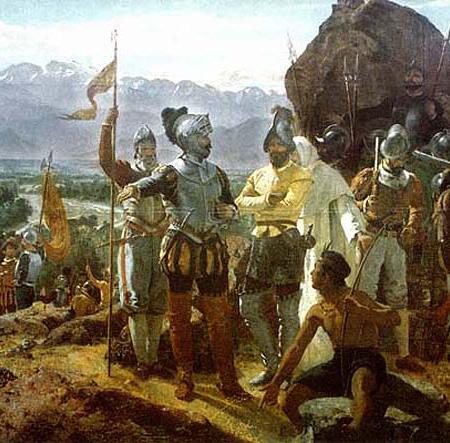
McBAIN JAMESON
The first known settler of Plano establishes a farmstead north of present-day Downtown.
MEXICAN INDEPENDENCE (1810-1821) Following Mexican independence from Spain, the area of Plano was claimed under Mexican rule.
SAN ANTONIO FOUNDED (1718)
FRENCH COLONIZATION (1684-1689)
In 1684, a French expedition bound to establish a settlement on the Mississippi River found themselves instead along the Matagorda Bay in Texas. After learning of this new settlement, Spanish troops were sent to find and destroy them. Although the French settlement was in ruin by the time they were found, this sparked a renewed interest in the Texas territory and spurred the exploration and establishment of Catholic missions.
NATIVE AMERICAN tribes
No evidence of Native American settlements has ever been found in Plano. Historic campsites to the north and northeast of Plano have been attributed to Delaware, Kiowa, and Cherokees; however, these groups were not native to the area, but were forced through by westward European expansion. Attacks on early settlers were attributed to bands of roaming Comanches who came in from the west. Some studies suggest that the Tonkawa, Wichita, and Caddo people settled in the area.
THE ALAMO & TEXAS INDEPENDENCE
Following defeat by the Mexican army at the Alamo in San Antonio on March 6, 1936, “Remember the Alamo!” became the battle cry of the Texans fighting for independence. Less than two months later on April 21, Texas would gain its independence following the Battle of San Jacinto. The Republic of Texas was formed and new settlers would soon be attracted to the area.
november 2018 CHapter 3: history of plano 23
Residential Commercial Church Cemetery Downtown Fire 1800 1840
1600 1700
1840-1872: PLANO’S EARLY YEARS
This period is defined by the arrival of Plano’s first settlers, mostly of the Peters Colony, until the arrival of the H&TC Railroad. The community is mostly scattered farmsteads, although the beginnings of Downtown Plano begin to take shape as the post office is established in the cabin of William Forman.
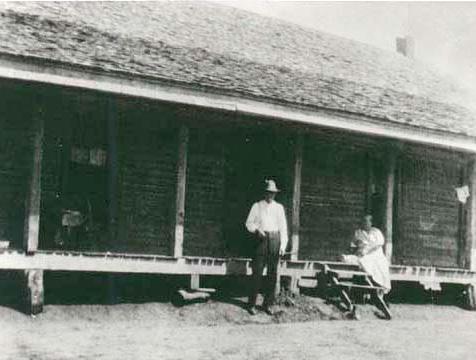
M cBAIN JAMESON
(1840) Plano’s first known settler comes to Plano
MUNCEY INCIDENT (1844) McBain Jameson and the Russell family are found brutally murdered in front of their homestead. According to Plano lore, the attack was the last Indian raid in Collin County and terrified the local population for years to come.
Republic of Texas (1836-1845)
“Here was a land such as few had ever seen, a land that every foot was tillable as it could be plowed to the very beds of streams, a land of plentiful rainfall and a yearly grow ing season of nine months. Truly a stockman’s paradise.”
- R. W. Carpenter (1852)
PLANO IS FOUNDED
(1852)
After the name Fillmore was rejected, residents decide to name the city ‘Plano,’ which they believed to be the Spanish word for “plain.”
1852
First Methodist Church is established in the Russell home.
Baccus
Texas becomes the 28th State (1845)
COLLIN COUNTY ESTABLISHED (1846)
COLONY (1841)
Many of Plano’s first settlers came from Kentucky and Tennessee. This is largely attributed to the Peters Colony, an empresario land grant company headquarted in Louisville, Kentucky that granted 320 acres per single man or 640 acres per family to settle in North Texas. The Peters Colony was successful in attracting new residents to Texas by praising the area’s climate and fertile soil.
Spring Creek Baptist Church
shawnee trail
Following the traces of a pre-historic bison path along the White Rock Escarpment and later used by Native Americans, the Shawnee Trail was a major route for driving cattle to northern markets as well as immigrants coming to Texas. Sculptures depicting cattle drives along the Shawnee Trail can be visited today in the Baccus Plaza in Legacy Town Center.

November 2018 CHapter 3: history
24 Transportation and Infrastructure Growth & Development Institutions Downtown Douglass
Architecture Business
of plano
Community
1840 1842 1844 1846 1848 1850
1854 1856
Routh Cemetery, although located in modern day Richardson, is the resting place of many early Plano citizens.
Rowlett Creek Baptist Church
PETERS
Plano Mutual
Post Office established in William Forman Cabin (1851)
Architectural Styles
• Greek Revival
• Gothic Revival
• Pre-railroad
• Italianate
EARLY CHURCHES AND CEMETERIES
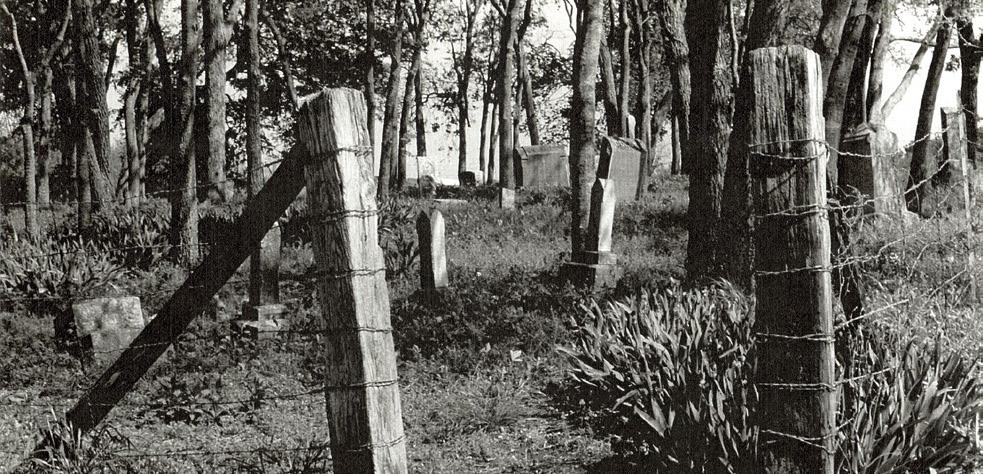
As people settled in and around what would become the City of Plano, the establishment of churches gave settlers a sense of community. Churches often started in log cabin homes prior to building individual churches closer to town. According to family histories, guns were stacked under a tree at the Rowlett Creek Baptist Church before services to have them nearby for protection. In the early years, cemeteries were also established. The oldest known grave in Plano is that of Daniel Cook (January 13, 1847) in the Baccus Cemetery.
First Christian Church
MOUNT VALE SCHOOL is opened by Jacob Routh and his neighbors
1ST PUBLIC SCHOOL is established in the Christian Church
Leach-Thomas Bowman Rowlett Creek
Civil War (1861-1865)
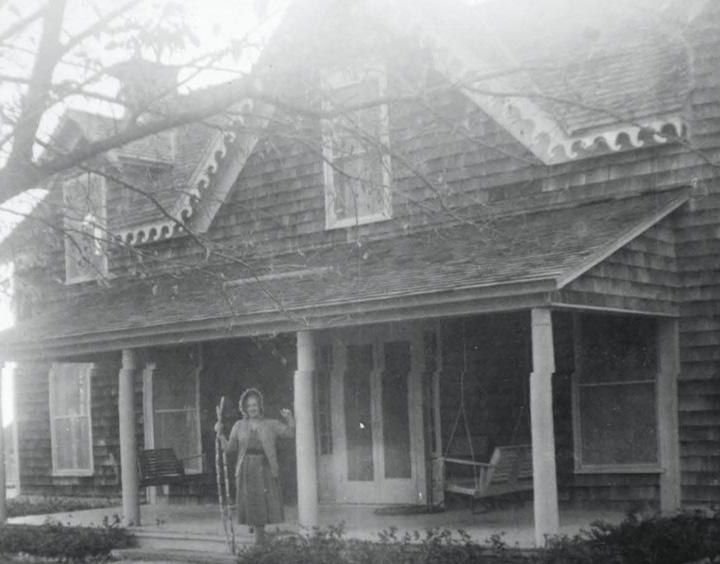
Collinwood (ca. 1860)
PLANO MASONIC LODGE #235 (1860) moves into the Gossum Storehouse at 15th and K Avenue
ANDY DRAKE (1860)
the first free African American to move to Plano and forefather of Plano African American community
Forman
First Presbyterian Church
COLLINWOOD HOUSE One of the oldest homes in Plano
Photo provided by Collin County Historical Commission
november 2018 CHapter 3: history of plano 25 Residential Commercial Church Cemetery Downtown Fire 1872 1856
1858 1860 1862 1864 1866 1868 1870
POPULATION OF
155
PLANO
1872-1895: DOWNTOWN PLANO
EMERGES
This period starts with the opening of the H&TC Railroad, which is transformative in Plano history. Downtown grows as business that process agricultural products locate in proximity to the railroad. Other businesses begin to locate in Downtown to serve the needs of the farming families. Opening of the Cotton Belt railroad solidifies Plano as a commercial center. This period comes to an end with the great fires in the late 1890s, which destroy most of the buildings downtown.
The Railroad Business
HOUSTON & TEXAS CENTRAL RAILROAD
The opening of the H&TC Railroad transformed Plano from a community of scattered farms and homesteads to a center of business and agriculture. Less expensive than shipping by wagon, the railroad opened up new markets to Plano’s farmers.
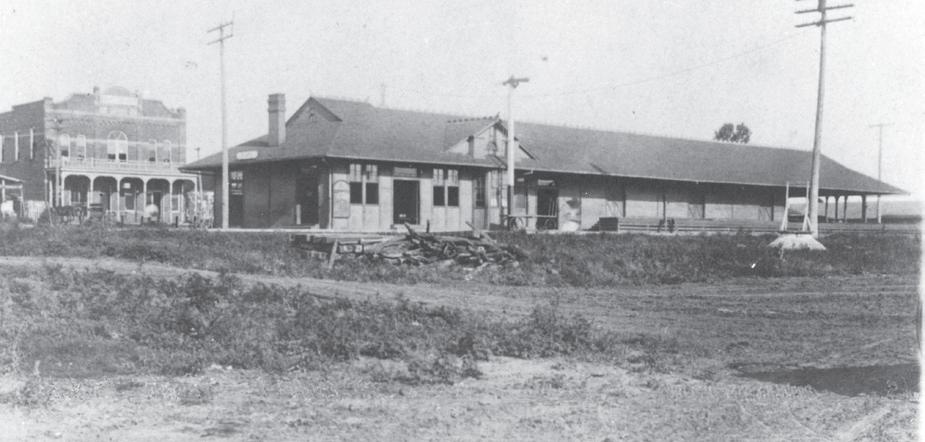
Railroad business established Plano as a center for agricultural commerce for importing and exporting crops in south Collin County. By 1887, Plano was shipping more grain than any other station on the H&TC Railroad north of Dallas. Railroads also brought new building materials to the city, which were primarily used for Plano’s finest houses.
PLANO PUBLIC SCHOOL
The making of Plano ISD begins to take shape as private rural schools are consolidated into the Plano Public School.
Bethany Christian Church & Cemetery
Old City
Long Depression (1873-1879)
Schimelpfenig Dry Goods store opens in Downtown Plano
CITY OF PLANO IS INCORPORATED
C.J.E. Kellner was elected first mayor, along with five aldermen and one councilman.
TELEPHONE
The first reference to a telephone in Plano. Southwestern Telegraph and Telephone Company either installed or acquired the original telephone service.
Harrington Pharmacy opens its doors. The business would serve Plano for over a century.
With the arrival of the H&TC railroad and Downtown’s emergence as a business center, many rural churches began relocating to Downtown Plano.
- First Presbyterian Church of Plano (1873) - First Christian Church of Plano (1873) - First Methodist Church of Plano (1874) - First Baptist Church of Plano (1875) - Shiloh Baptist Church (1884)
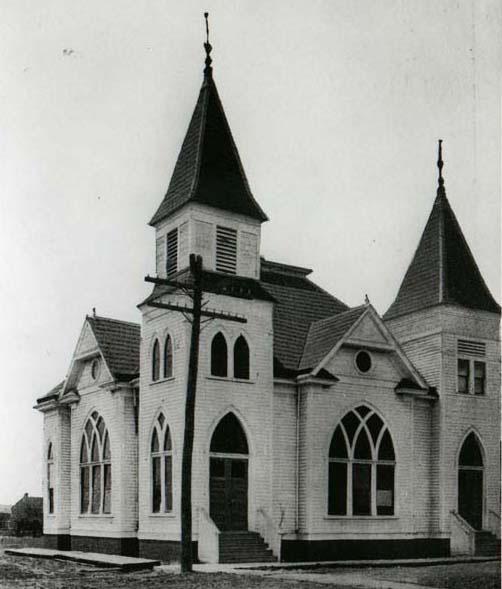
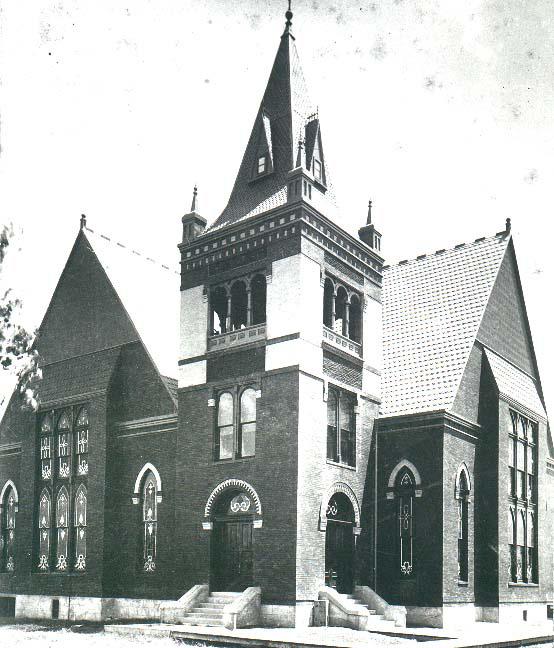
November 2018 CHapter 3: history of plano 26 Transportation and Infrastructure Growth & Development Institutions Downtown Douglass Community Architecture Business
1872 1874 1876 1878 1880 1882 1884
CHURCHES RELOCATE DOWNTOWN POPULATION OF PLANO 500
First
First Baptist Church of Plano
Presbyterian Church of Plano
COTTON BELT RAILROAD OPENS
The Cotton Belt Railroad was the second to pass through Plano, this time running east-west and connecting the city to markets in Arkansas, Missouri, and beyond. Today, the old Cotton Belt railroad line is planned for a Dallas Area Rapid Transit (DART) light rail line connecting Plano to the DFW International Airport.
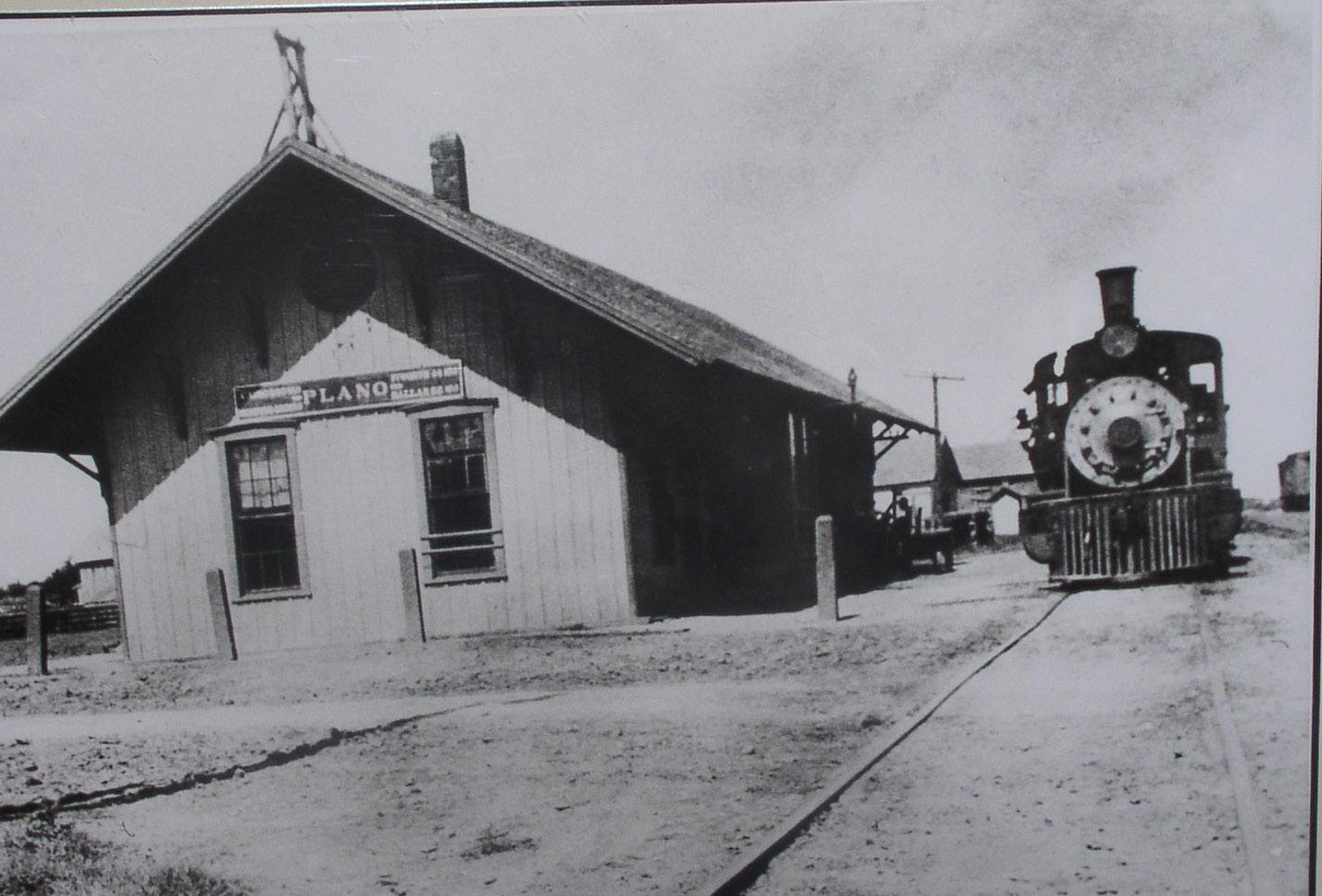
Architectural Styles
• Victorian • Queen Anne
• Wooden Commercial Buildings
• Shotgun
SMALLPOX OUTBREAK
An outbreak of smallpox at the Collinsworth Farm leads to a quarantine of the town. To prevent an epidemic, armed guards restrict access to downtown.
Mary Schimelpfenig Olney Davis Wetzel Mathews Mitchell Ferrell-Wilson
PLANO FIRE DEPARTMENT ESTABLISHED
Schimelpfening-DudleyO’Neal, Lamm, Wells
Depression of 1893
Plano National Bank opens Plano Masonic Lodge #235 Disbanded
THE ECLIPSE FIRE COMPANY
Brent House is built on Preston Road. It would later be moved to Old City Park in Dallas
Mules
Plano was the leading producer of mules, including the largest mules west of Mississippi River. C. S. Haggard owned a particularly large mule that came to be known as “Mammoth Jack.”
PLANO HIGH SCHOOL celebrates its first graduating class
GREAT FIRE OF 1895
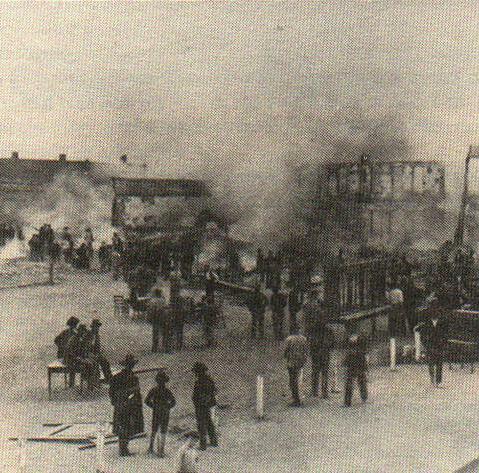
Substantial physical and population growth during this time period was accompanied by numerous fires which repeatedly destroyed the business district of Plano. One of the last great fires occurred in 1895, when all but a few buildings were totally destroyed.
Plano Masonic Lodge #768 Chartered
november 2018 CHapter 3: history of plano 27 Residential Commercial Church Cemetery Downtown Fire
1894
Collinsworth 1895 1884 1886 1888 1890 1892
Carlisle Grocery Store Opens
824
POPULATION OF PLANO
1895-1920: PLANO PERSISTS
This period begins from the ashes of the downtown fires of the late 1890s. Downtown as we know it today begins to take form as the community rebuilds new brick buildings and storefronts. Business is still primarily agricultural-related; however, the city begins to modernize with the installation of new infrastructure. Many of Plano’s historic homes are constructed during this period.
OLD SPANISH SCHOOL (1903)
DOWNTOWN REBUILDS
After the great fires of the late 1890s, Downtown Plano began to rebuild. Specifically, brick was used in construction, as seen in the photo of Mechanic Street (15th) above.
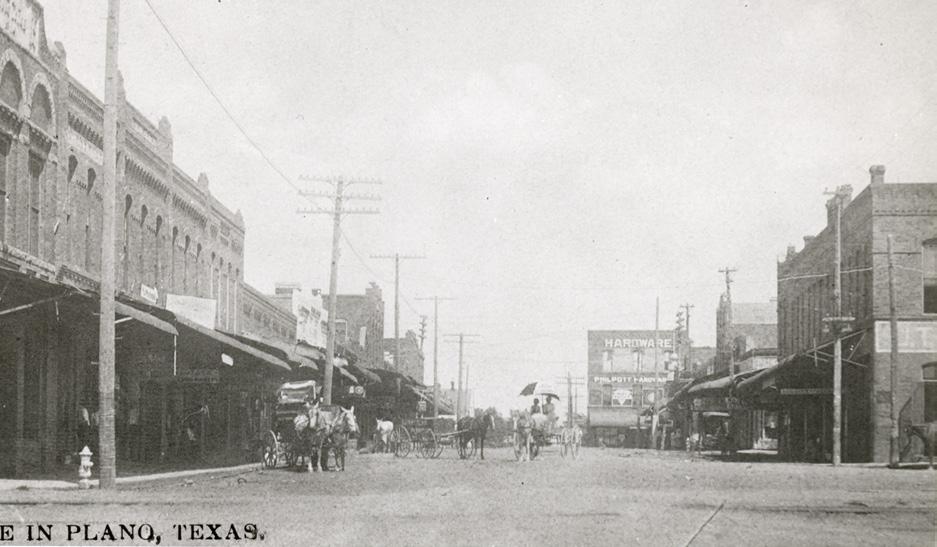
Carpenter Wall-Robbins Salmon
Depression of 1893
IOOF/Plano National Bank, Moore House/ Masonic Lodge
Mathews General Store W. D. McFarlin Bagwill-Sherrill
Despite a fairly peaceful environment, racial segregation was the general rule in Plano throughout the 19th and early 20th centuries.
Land for the city’s first park, Harrington Park, was donated by the Plano Fishing Club
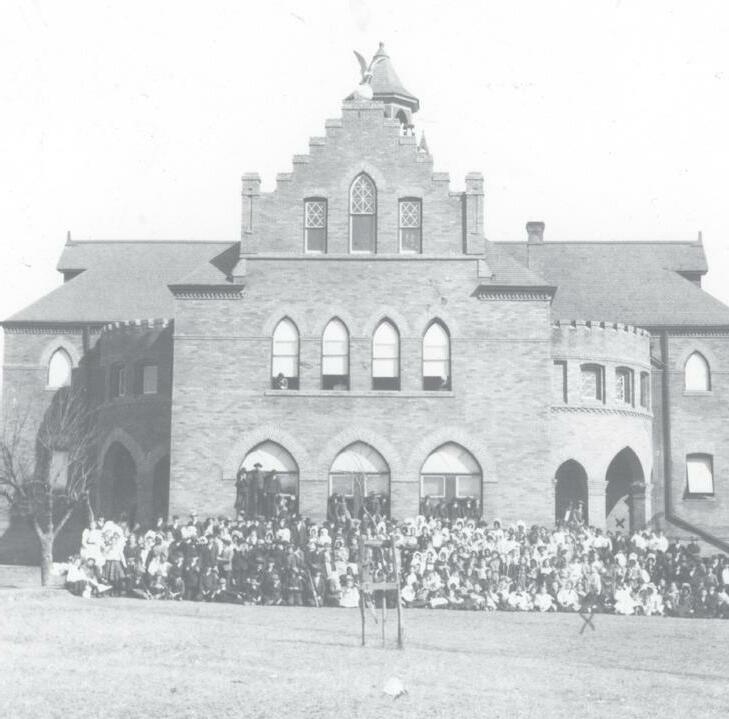
After separating from the city in 1899, the newly independent Plano schools contracted to build a new 3-story, red brick building that has become known as the Old Spanish School.
1,304
POPULATION OF PLANO
Will Schimelpfenig Roller
Thornton George Hood
FIRE CODE ADOPTED
Plano Colored School Opens (1896)
DOUGLASS COMMUNITY
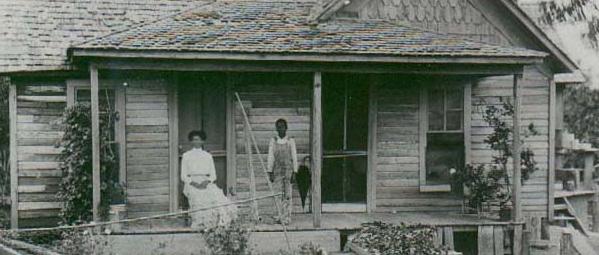
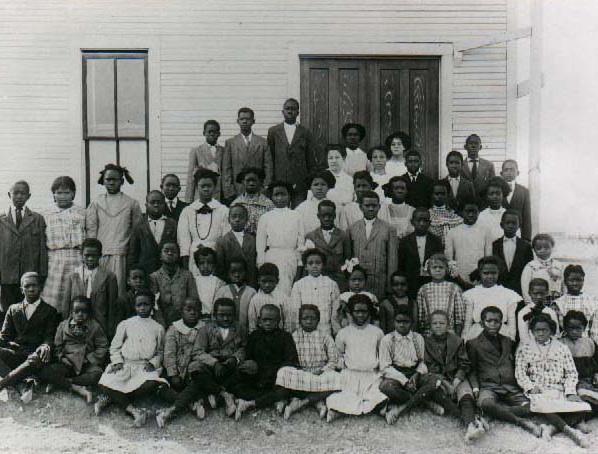
(1900)
Around 1900, the African American community of Plano began to establish itself in what is known today as the Douglass Community. John “Bud” Thornton, whose house is at 900 13th Street, was a successful businessman and one of the first African Americans to purchase land in Plano.
November 2018 CHapter 3: history of plano 28
Architecture
Transportation and Infrastructure Growth & Development Institutions Downtown Douglass Community
Business 1896
1895 1898 1900 1902 1904 1906
Fannie Harrington Chapel
Architectural Styles
• Colonial Revival
• Tudor
• Italianate/ Romanesque
• Craftsman
INTERURBAN OPENS
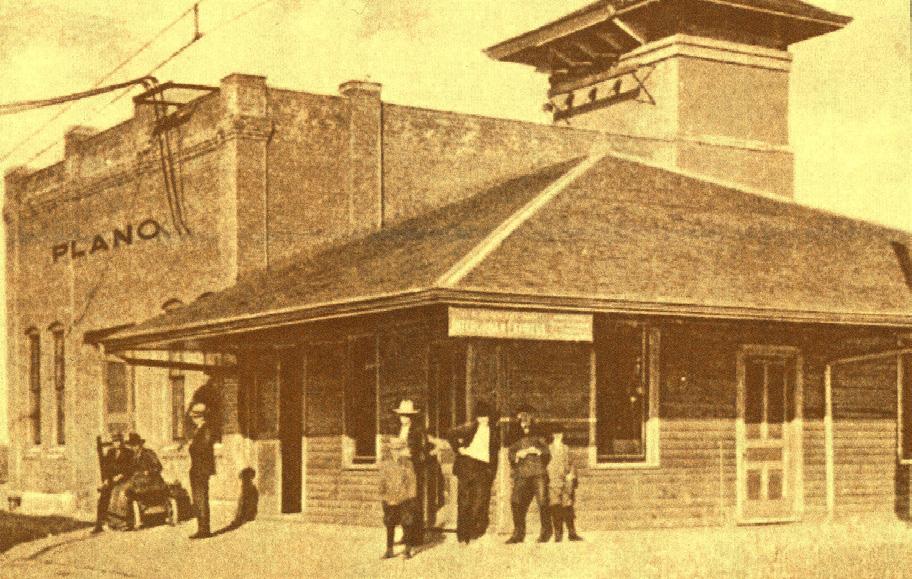
Commonly known as the Interurban Line, the Texas Electric Railway connected Plano to the greater North Texas region, making it possible for Plano residents to work in Dallas and other communities. Plano’s downtown Interurban substation is the only remaining substation in existence on this line.
1,258
POPULATION OF PLANO
• Bungalow
• Prairie
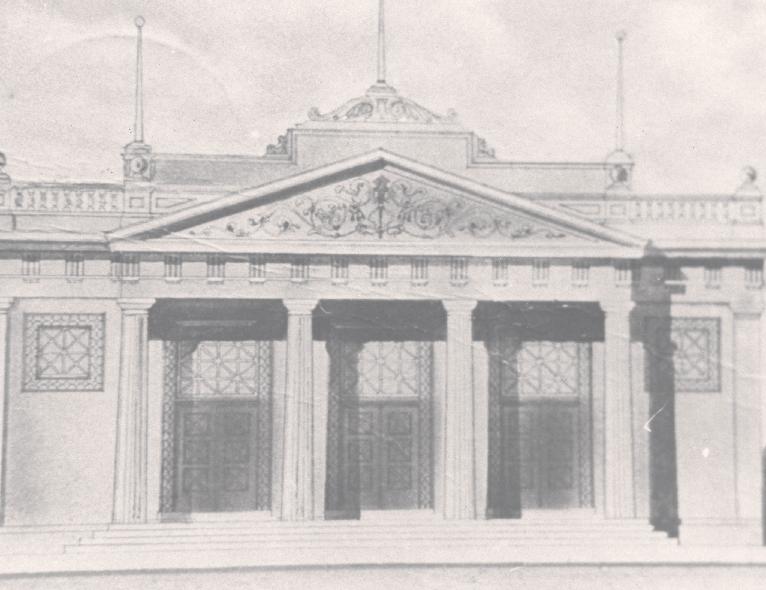
• Neoclassical
• Eclectic
• Second Empire
Modern Infrastructure
The Plano Persists Era was a time of modern infrastructure and technological advancements including:
• Telephone (1883)
• Water (1897)
• Artesian Water (1904)
• Trash (1909)
• Sewer (1909)
“Big Tom” Fire Truck (1915)
Plano’s first motorized fire truck
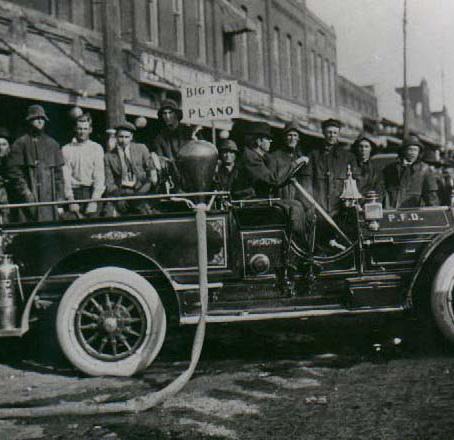
World War I (1914-1918)
• Concrete Sidewalks (1909)
• Oiled & Graveled Streets (1917)
• Paved Roads (1925)
• Natural Gas (1926)
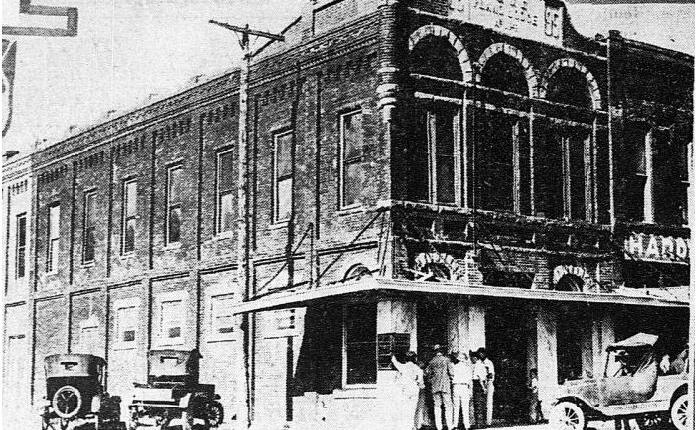
Football & baseball teams are established at Plano High School
On the night of February 28, 1920, Deputy City Marshal Green W. Rye discovered two men robbing the Plano National Bank. Rye was shot and fatally wounded by the robbers, who successfuly escaped He would later be memorialized as Plano’s first officer killed in the line of duty.
november 2018 CHapter 3: history of plano 29 Residential Commercial Church Cemetery Downtown Fire 1920
1912 1906 1910 1914 1916 1918 Saigling
Aldridge
S. B. Wyatt
Carlisle R. A. Davis Arch Weatherford
Merritt
1908
Civic Auditorium Constructed (1909)
BANK ROBBERY (1920)
Hughston
1920-1958: SMALL TOWN PLANO
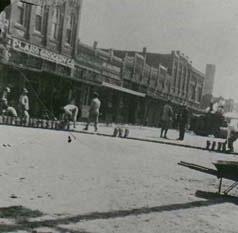
This period begins around 1920, following World War I and the slow growth of the community. The population of Plano remains steady around 1,600 people. Toward the end of this era, Plano begins to recognize its impending growth and takes measures to plan, including a zoning ordinance and creation of the North Texas Municipal Water District.
COX SCHOOL BUILDING (1924)
After demolition of the Old Spanish School, the Cox School Building was constructed. This building served as Plano High School until construction of Williams High School in 1962.
1,554
POPULATION OF PLANO
The now iconic Art Deco facade is applied to the Plano National Bank (1936)
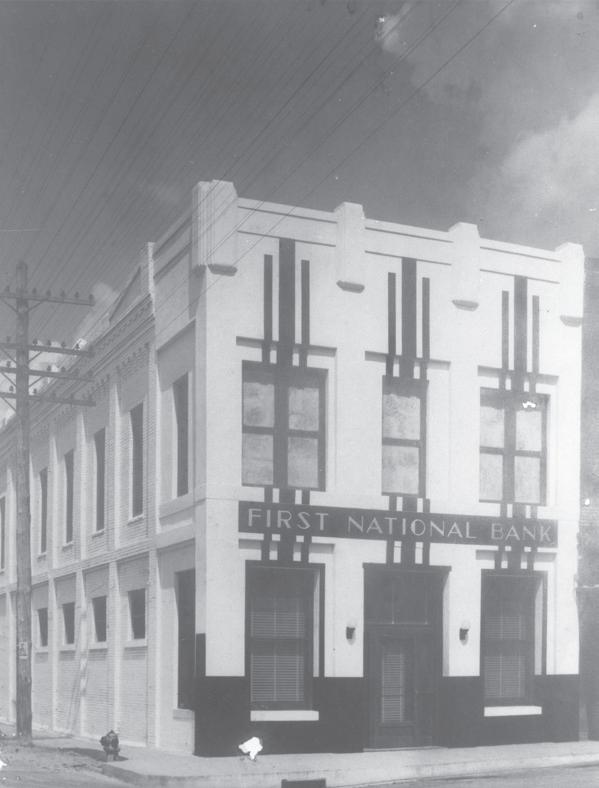
Great Depression (1929-Late 1930s)
THE WILDCAT becomes mascot of Plano High School
HAGGARD PARK DEDICATED
Plano Masonic Lodge #768 Moves Into Moore HouseHotel
CIVIC AUDITORIUM DEMOLISHED (1938)
The building was replaced with the current structure, erected as a Works Progress Administration project and now serving the Courtyard Theater.

Rice Field
In the same year that the Plano Wildcats had their first undefeated season (1925), Rice Field was completed. This was the home of Plano High School and Plano Colored School from 1925 - 1963.
November 2018 CHapter 3: history of plano 30 Transportation and Infrastructure Growth & Development Institutions Downtown Douglass
Architecture Business
Community
1920 1922
1926 1928 1930 1932
1938
1924
1934 1936
Schell
Little Carlisle
POPULATION OF PLANO 1,715
15th Street Paved (1925)
CENTRAL EXPRESSWAY (1958)
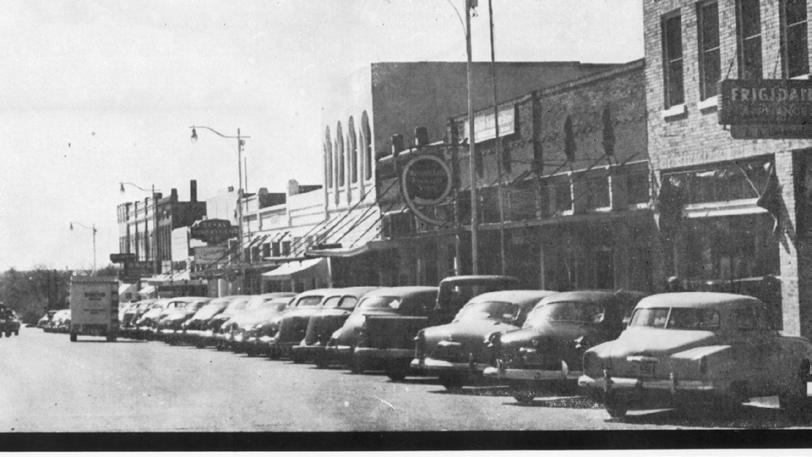
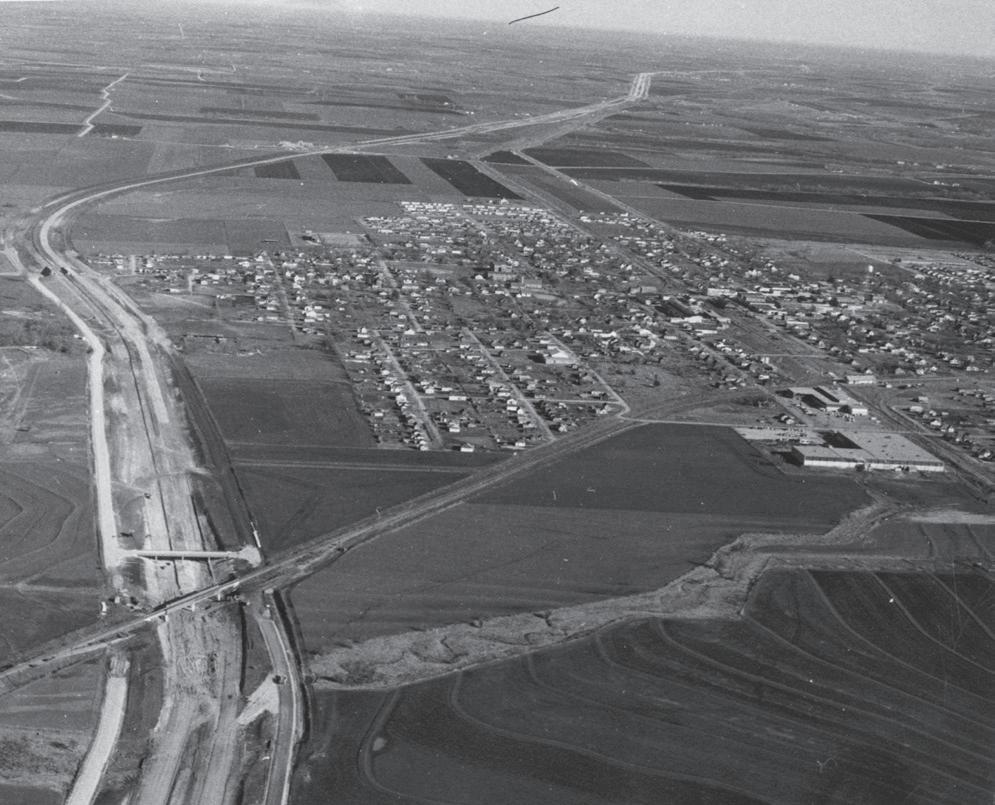
Like the coming of the H&TC Railroad nearly a century before, the completion of Central Expressway (US 75) was a transformative moment in the history of Plano. Now with quick and convenient access to jobs in Dallas, Plano would soon explode in population over the coming decades. New homes spread first to the east of town, in neighborhoods such as Old Towne and Briarwood, and then transitioned west of the highway with new neighborhoods such as Dallas North Estates. The change of Plano from an agricultural community to a suburban community can largely be attributed to Central Expressway.
MENDENHALL ELEMENTARY
The opening of Plano Elementary School, now Mendenhall Elementary, allowed the separation of primary and secondary education in Plano. POPULATION OF PLANO
L.A. Davis
STREETS RENAMED (1948) Streets throughout the city are renamed to the grid system, with alphabetical streets running north-south and numerical streets running eastwest.
november 2018 CHapter 3: history of plano 31 Residential Commercial Church Cemetery Downtown Fire 1958 1938 1940 1942 1944 1946 1948 1950 1952
1956
NORTH
MUNICIPAL WATER DISTRICT IS
HAGGARD ADDITION 1st
subdivision 1st
• Art Deco
Mid-century Modern
Minimal Traditional
Early Ranch Style
Bungalow • Craftsman
Commercial Storefronts
Stucco Wraps on Downtown
Spanish Revival Architectural Styles
1954
INTERURBAN CLOSES following the decline of the railroads
TEXAS
FORMED (1950)
platted
Zoning Ordinance World War II (1939-1945)
•
•
•
•
•
•
•
POPULATION OF PLANO 2,126
1,582
1958-1985: PLANO WELCOMES GROWTH
This period begins with the explosion of residential and employment growth brought about by the construction of Central Expressway. Business begins to shift away from agriculture to technology and research companies, offering white collar jobs. Plano’s arterial roadway pattern begins to take shape, with shopping centers located at key intersections. Downtown’s importance to the local economy begins to diminish as Collin Creek Mall becomes the new entertainment area. Plano ISD emerges as a leader in education and sports.
FIRST FOOTBALL STATE CHAMPIONSHIP
WILLIAMS HIGH SCHOOL OPENS (1962)
The Plano High School football team defeated Edna High School 20-17 to win its first state championship. The school would win six additional championships in ‘67, ‘71, ‘77, ‘86, ‘87, and ‘94.
The first traffic light is installed at 15th Street and K Avenue.
17,872
POPULATION OF PLANO
The school was originally named Plano High School when it opened as a replacement for the Cox School Building in 1962. The building was renamed Williams High School in 1975 following the opening of Plano Senior High. 1970
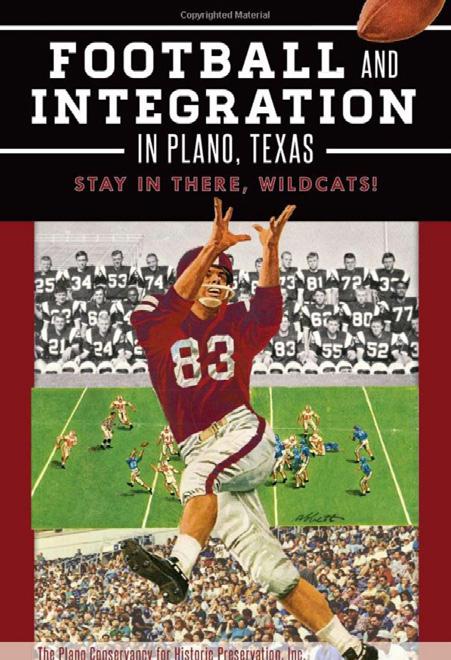
3,695 POPULATION OF PLANO
Texas Pool
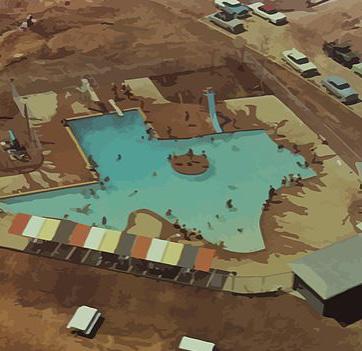
PLANO’S FIRST COMPREHENSIVE PLAN (1963)
With an estimated population of 7,900 people, double that of just three years prior, Plano recognized that growth was coming rapidly. The 1963 Comprehensive Plan laid out the land use plan and transportation network, including a planned Expressway Loop around the city. The expressway was never constructed, but the arterial network we recognize today began to take shape.
NEW CITY HALL (1965)
University of Plano Opens
GLADYS HARRINGTON LIBRARY OPENS (1969)
The first public library in Plano
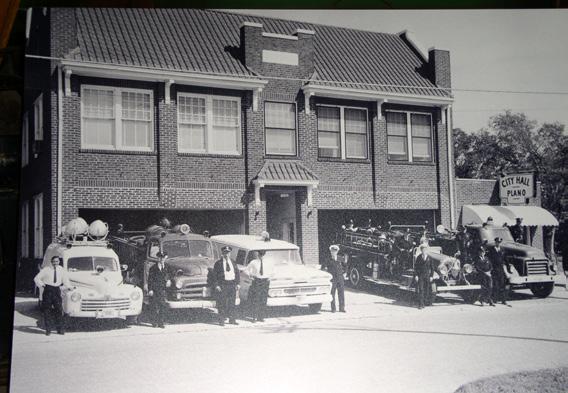
Parks & Recreation Department is established
SCHOOL INTEGRATION (1964)
I n 1964, the PISD School Board voted to give students at Douglass High School the option to shift to Plano High School for the 1964-1965 school year. The students chose to move. Douglass continued to house grades 1-8, before closing completely after the 1967-1968 school year. Newly integrated, the Plano High School football team went on to win the state championship in 1965.
November 2018 CHapter 3: history of
32
Downtown
Architecture
plano
Transportation and Infrastructure Growth & Development Institutions
Douglass Community
Business
1958
1960 1962 1964 1966 1968 1972
School Integration (1960-1968)
Architectural Styles
• One-story Ranch
• Mid-century Modern
• Built-in Garage
• Second-story Overhang
• Contemporary
PLANO SENIOR HIGH SCHOOL OPENS
Due to rapid growth in enrollment, Plano ISD moved to a model of junior and senior high schools in 1975. 11th and 12th grade students began attending Plano Senior High School.
LAST COTTON GIN CLOSES
Symbolic of Plano’s change from an agricultural to a suburban community, the last cotton gin closes in downtown.
COLLIN CREEK MALL OPENS
When it opened in 1981, the Collin Creek Mall was the new center of activity and shopping for Plano and the surrounding region.
CLARK STADIUM OPENS
a premiere high school football stadium at the time
PLANO GENERAL HOSPITAL OPENS
Plano Municipal Center Opens
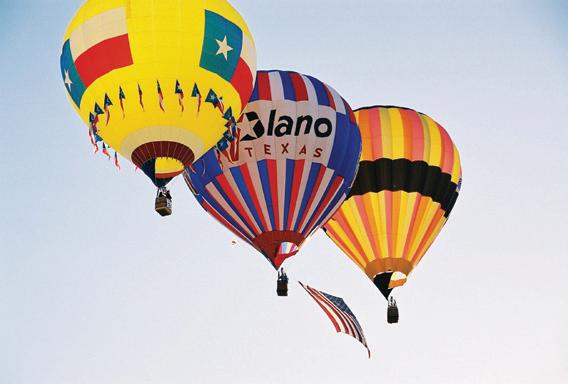
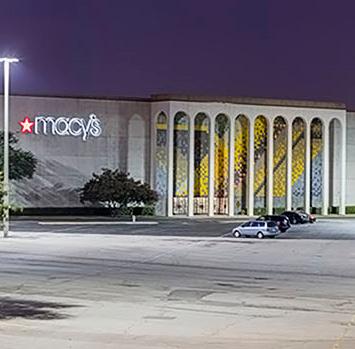
PLANO EAST SENIOR HIGH SCHOOL OPENS (1981)
DART IS FORMED University of Plano Closes CENTRAL EXPRESSWAY WIDENED
(1975) FIRST
Fox & Jacobs
After World War II, Fox & Jacobs began building homes in Texas that were small, affordable starter homes for families. They built many homes in Plano and the Dallas area, becoming one of the largest builders of single-family homes in the southwest.
LEGACY LAND PURCHASE (1979)
Ross Perot purchases land in what is now the Legacy business area in west Plano. This would prove to be instrumental in the growth and development of the city and contribute to the massive growth of Plano to the west of US 75.
november 2018 CHapter 3: history of plano 33 Residential Commercial Church Cemetery Downtown Fire
1985 1972 1974 1976 1978 1980 1982 1984
POPULATION OF PLANO 72,331
PLANO
BALLOON FESTIVAL
1985-2000: CORPORATE PLANO
Rapid growth continues during this period, including the arrival of corporate campuses in the Legacy area with massive employment growth and westward expansion. The city begins to recognize the troubles of downtown and begins laying the groundwork to revitalize the area. Plano ISD establishes its reputation as a regional and national leader in public education and athletic prowess.
Frito lay (1985)
DOWNTOWN
DEVELOPMENT PLAN (1991)
In 1985, Frito Lay opened the first major office campus in west Plano, marking the beginning of a new major employment center. Just a few years prior the area was farmland and agricul tural properties. More offices, corporate head quarters, and housing would soon follow.
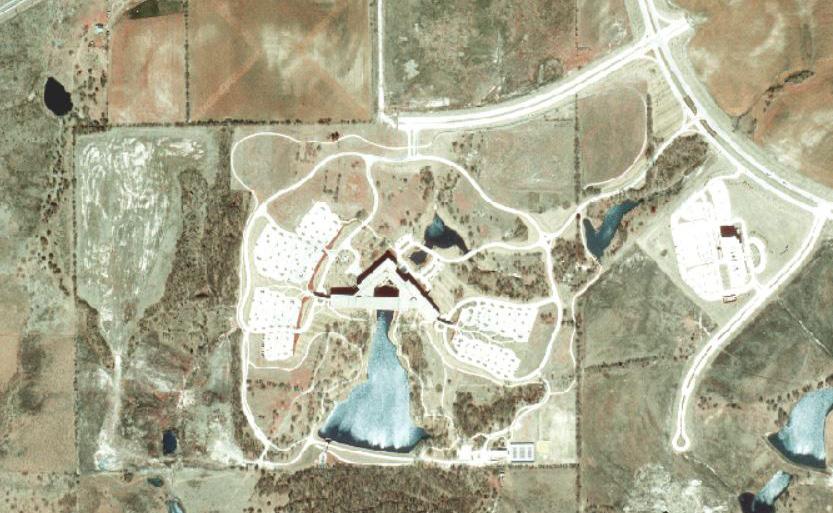
As development continued moving west of Plano’s original core, the City acknowledged the decline of downtown and created plans to revitalize the area. Building upon the successes of renovation efforts in the late 1980s, the Downtown Development Plan laid the foundation of Downtown Plano’s resurgence in the years that followed.
COLLIN COLLEGE (1988) Spring-Creek Campus Opens
Ave K/Municipal couplet complete
DOWNTOWN RENOVATED for Texas sesquicentennial celebration
DOUGLASS COMMUNITY CENTER OPENS (1987)
FREDERICK
128,713
POPULATION OF PLANO
1986 COMPREHENSIVE PLAN
Following annexation of over 400 acres in west Plano for Ross Perot’s Legacy office development, an update to the Comprehensive Plan was needed. This new plan was used for nearly 30 years and laid out the basic land use and transportation pattern that is established today. The success of Plano can largely be attributed to the 1986 comprehensive plan and the greater planning efforts of city leadership at the time.

November 2018 CHapter 3: history of plano 34
Infrastructure Growth & Development
Downtown
Architecture Business
Transportation and
Institutions
Douglass Community
1985 1988 1986 1990 1992
ELECTRONIC DATA SYSTEMS (1992)
Electronic Data Systems (EDS), founded by tech mogul Ross Perot, relocated its company headquarters to Plano in 1992. The move brought a significant number of tech jobs, reshaping the economy of Plano.

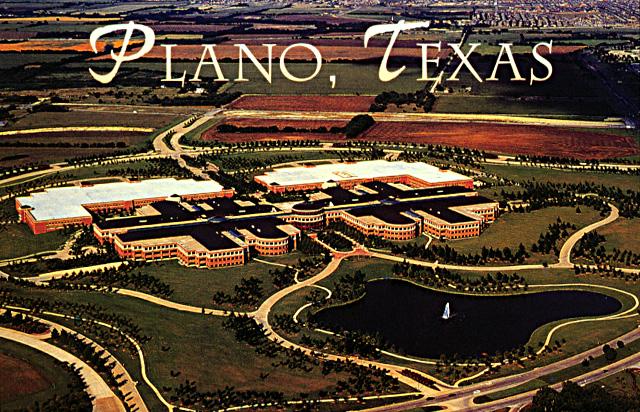
PRESIDENT GEORGE BUSH TURNPIKE OPENS
Planned since the 1950s, the completion of the President George Bush Turnpike was a longawaited connection to the DFW Airport. In 1999, parts of the expressway began opening to traffic.
JCPENNEY Headquarters
After announcing the move in 1987, the J. C. Penney Company relocates its headquarters from Manhattan to the Legacy business area in 1992.
EAST PLANO TRANSIT CENTER OPENS
Harrington Furniture, a staple of Downtown Plano for decades, closes its doors.
DALLAS NORTH TOLLWAY
is extended through Plano
ALL-AMERICA
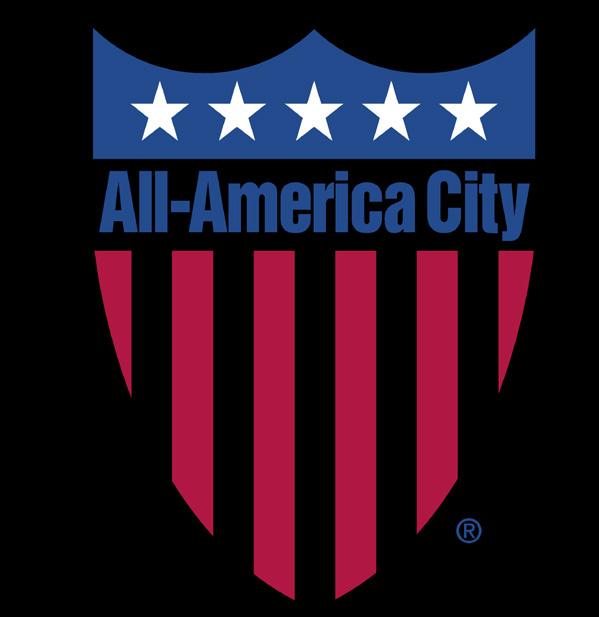
CITY (1994)
Plano is awarded the “All-America City” award from the National Civic League, recognizing Plano for the Police Department’s crime prevention efforts, PISD’s Practical Parent Education Program and the Plano Children’s Medical Clinic.
DR. PEPPER MOVES TO LEGACY
PLANO WEST SENIOR HIGH SCHOOL OPENS (1999)
CEREMONIAL GROUNDBREAKING OF LEGACY TOWN CENTER (1999)
november 2018 CHapter 3: history of plano 35 Residential Commercial Church Cemetery Downtown Fire 2000
1992 1994 1996 1998
Architectural Styles
Two-Story
•
• McMansions • Post-Modern • New Traditional
POPULATION OF PLANO 222,030
2000-2018: PLANO TODAY
DOWNTOWN DART STATION (2003)
Dallas Area Rapid Transit (DART) opened a light rail station in Downtown Plano in 2003. Long awaited, the new transit line connected Plano to downtown Dallas and fueled new transit-oriented developments, such as Eastside Village, around the station.
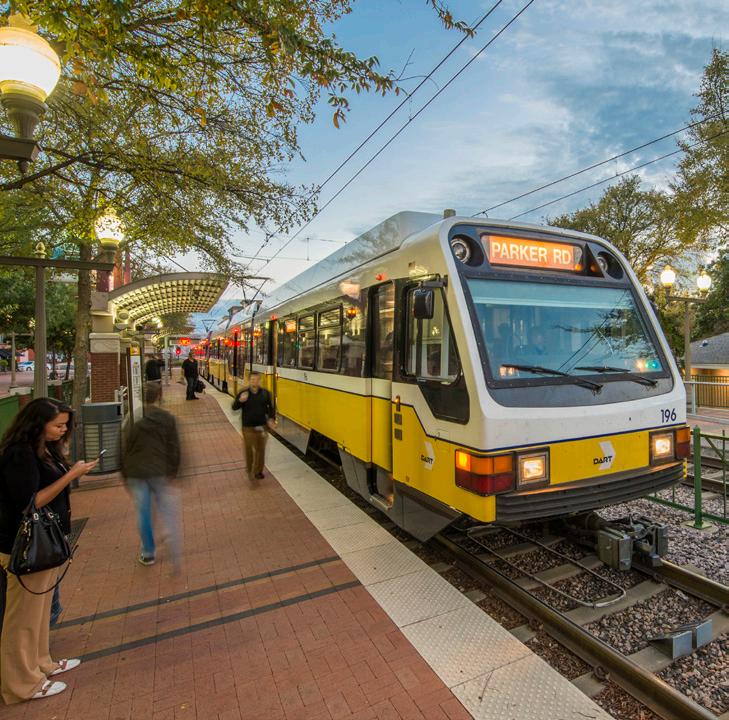
SAM RAYBURN TOLLWAY OPENS
Opening of the Sam Rayburn Tollway marked the completion of long-awaited transportation projects that connected Plano to the north side of DFW Airport.
Shops at Legacy (North
Side) Opens
In the year 2000, residential growth begins to slow and Plano focuses on mixed-use, redevelopment, and employment. Downtown continues its revitalization with the arrival of the DART light rail and businesses return, making downtown a premier entertainment district. During this period, Plano begins the transition from a suburban community to a first-tier suburb as growth continues beyond its northern limits. 2002 2004 2006 2008
EASTSIDE VILLAGE
Amphitheater at Oak Point Opens
LAST MAJOR ANNEXATION (2003)
The northeast corner of Marsh Ln and W Park Blvd became the last major addition to the city limits of Plano, marking an end to the westward growth in land area that began in the 1960s. Since that time only minor boundary adjustments with neighboring cities have changed the city limits.
LEGACY TOWN CENTER OPENS (2002)
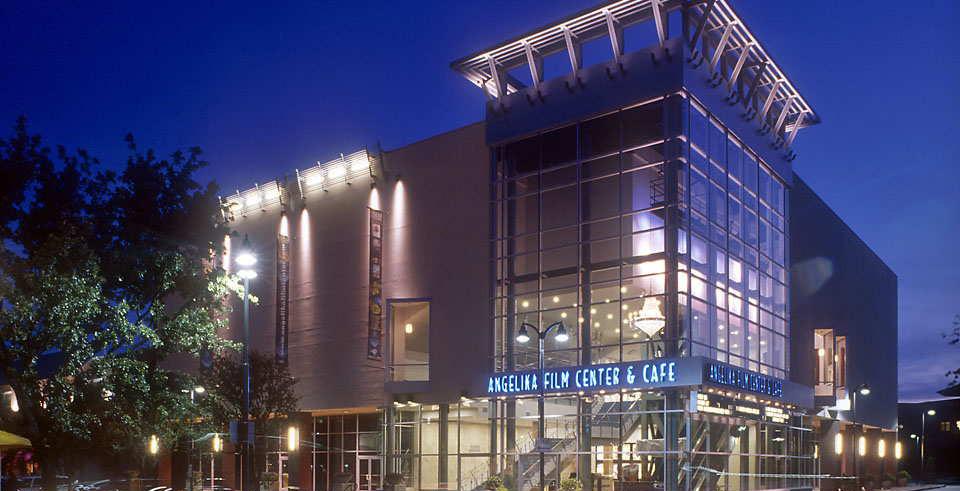
Opened in 2002, Legacy Town Center was the first major mixeduse center in Plano, outside of the historic downtown. The project reshaped the Legacy Business Area, introducing shopping, restaurants, and residential close to the nearby corporate offices.

November 2018 CHapter 3: history of plano 36 Transportation and Infrastructure Growth & Development Institutions Downtown Douglass Community Architecture Business
2000
POPULATION OF PLANO 222,030
WILLOW BEND MALL OPENS
•
• McMansions
•
• Lofts
• Townhomes
•
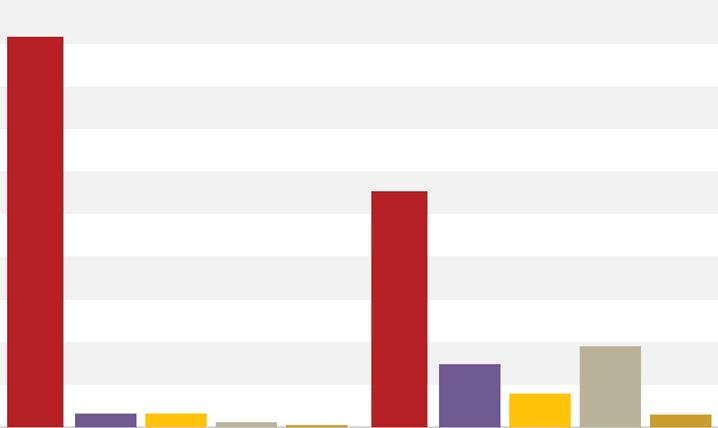
LEGACY WEST
Legacy West is a premiere mixed-use development on the west side of the Dallas North Tollway, north of Legacy Drive. The area is a recent addition to the greater Legacy Business Area of Plano.
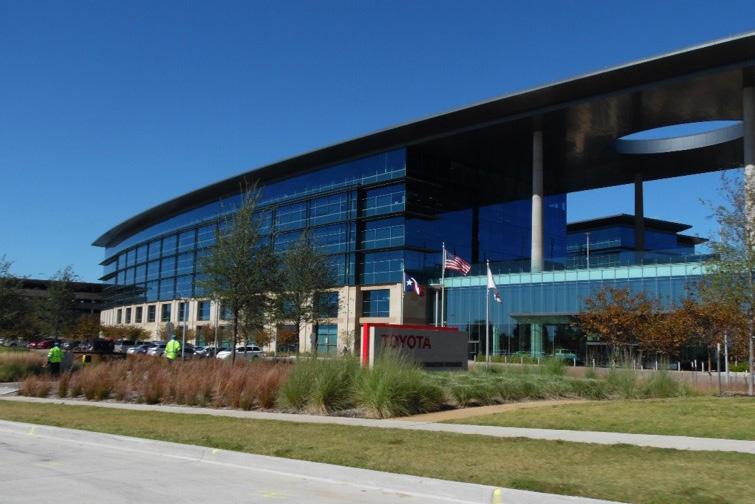

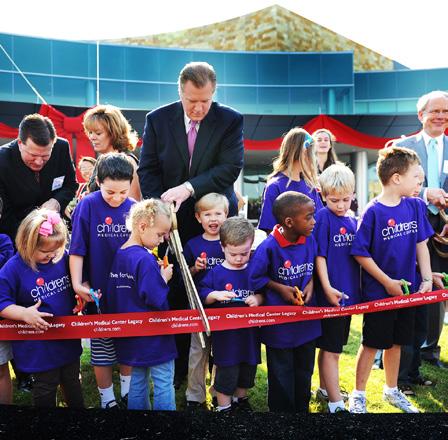
PLANO TOMORROW
(2015) Plano updates the city’s comprehensive plan for the first time since 1986. Although controversial, the plan would go on to win the Daniel Burnham Award for a Comprehensive Plan from the American Planning Association.
november 2018 CHapter 3: history of plano 37 Residential Commercial Church Cemetery Downtown Fire 2008 2010 2012 2016 2018
The Great Recession
Styles
(2008-2012) Architectural
New Traditional
Patio Homes
JP MORGAN CHASE & LIBERTY MUTUAL announce the location two new 1,000,000+ square-foot regional operations centers near Legacy West. POPULATION OF PLANO 259,841 POPULATION OF PLANO 281,390 2014
In 2014, Toyota announced the relocation of its North American headquarters to Plano. Opened in 2017, the company is now a major contributor to the local and regional economy. Since 1980, the diversity of Plano’s population continues to increase. DEMOGRAPHIC CHANGES 1980 2016 Source: 1980 U.S. Census & 2016 5-year American Community Survey White Black Hispanic Asian Other 100% 80% 60% 40% 20% Children’s Medical Center Opens
Curtain Wall Buildings
TOYOTA NORTH AMERICAN HQ (2014)
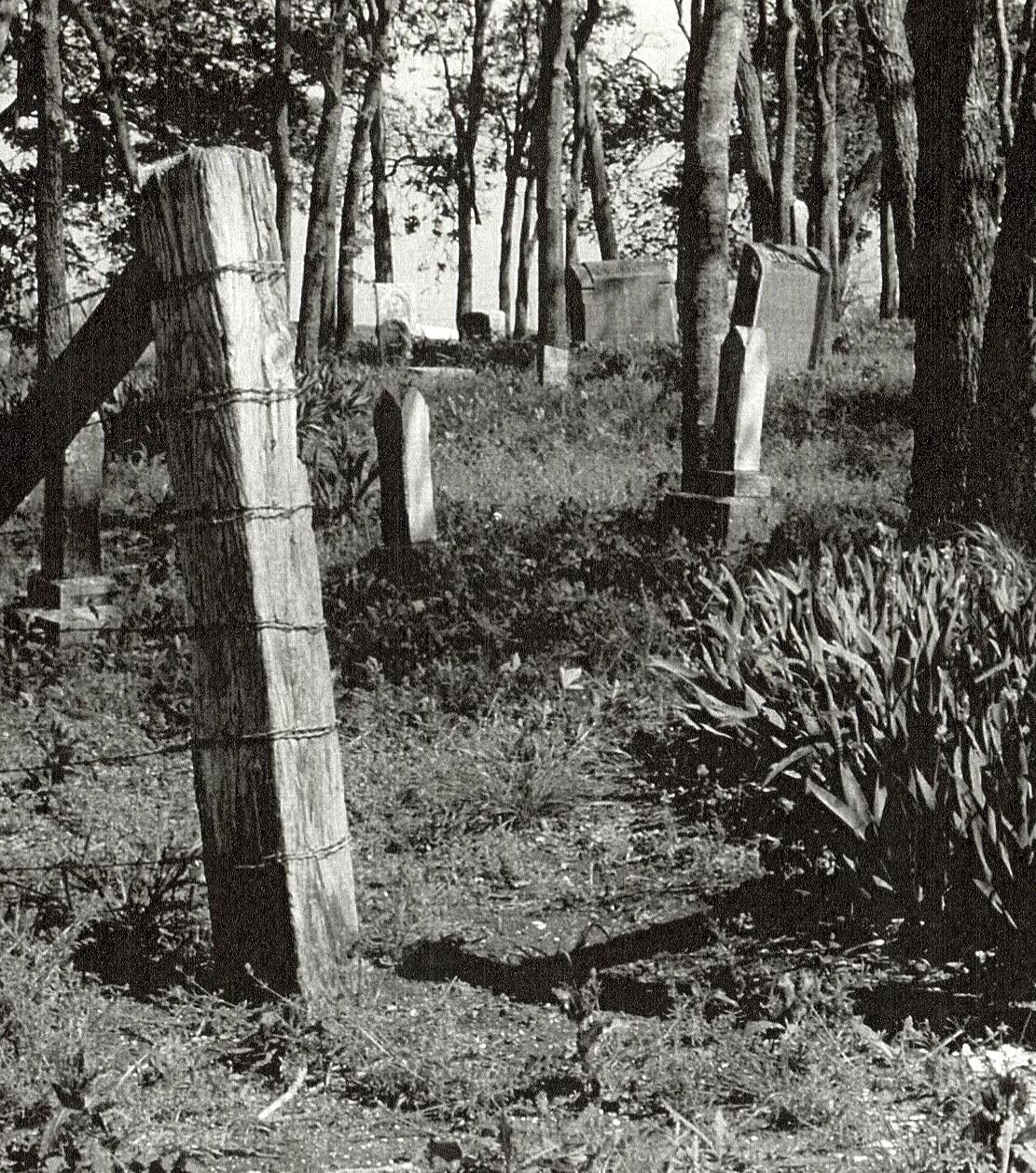
november 2018 CHapter 3: history of plano 38
YOUNG CEMETERY










































